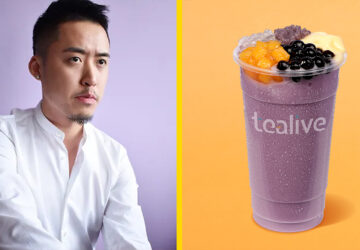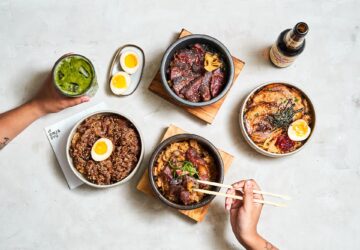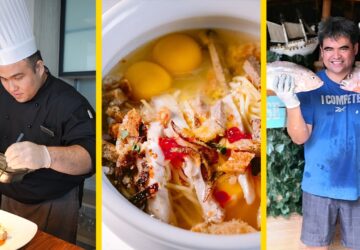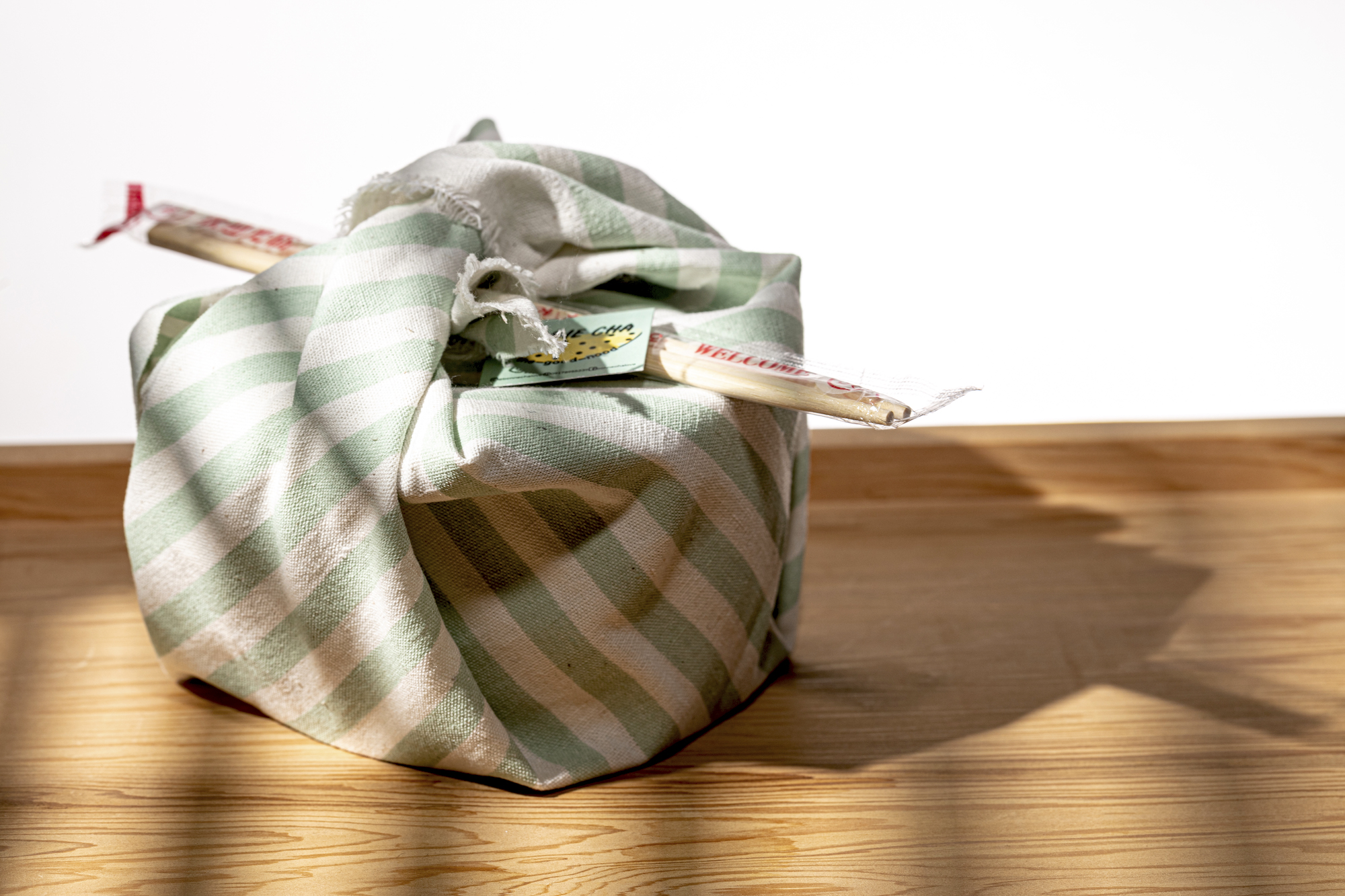With indoor and al fresco dine-in services still suspended, restaurants continue to look to delivery and takeout as their sole income generator—and package design, as seemingly minute this detail is, offers opportunities to connect with consumers
Traditional restaurants are thrust into developing effective package design to transport not only the food safely to the consumer but also hopefully offer a bit of the brand experience. Here, we talk to traditional establishments and online food businesses about how their packaging can help the at-home consumer experience beyond just the food and drink.
Kashmir
Leon Araneta, owner of 46-year-old Indian restaurant Kashmir was prescient in planning on taking the restaurant online back in 2018 but only got to execute it when the pandemic hit. “Immediately, come April (2020), 100 percent of our tiny, minuscule sales were online. It happened abruptly and it was not easy whatsoever. It was way ahead of schedule and we were not prepared for it.”
A popular order from the menu is the Thali Bilao. Thali is the Indian word for plate and usually refers to the large metal plate that carries various dishes of a festive Indian meal. To deliver this experience, Kashmir uses a bilao (a woven tray usually used for cleaning rice) and lines it with a banana leaf. Since the Thali Bilao consists mainly of saucy curries, biodegradable Cornware bowls and lids are used to keep everything spill-proof. Fresh, organic talinum leaves are then stuffed in between the bowls to ensure a secure ride from restaurant to home. This in turn gets covered in cling wrap with a ribbon.
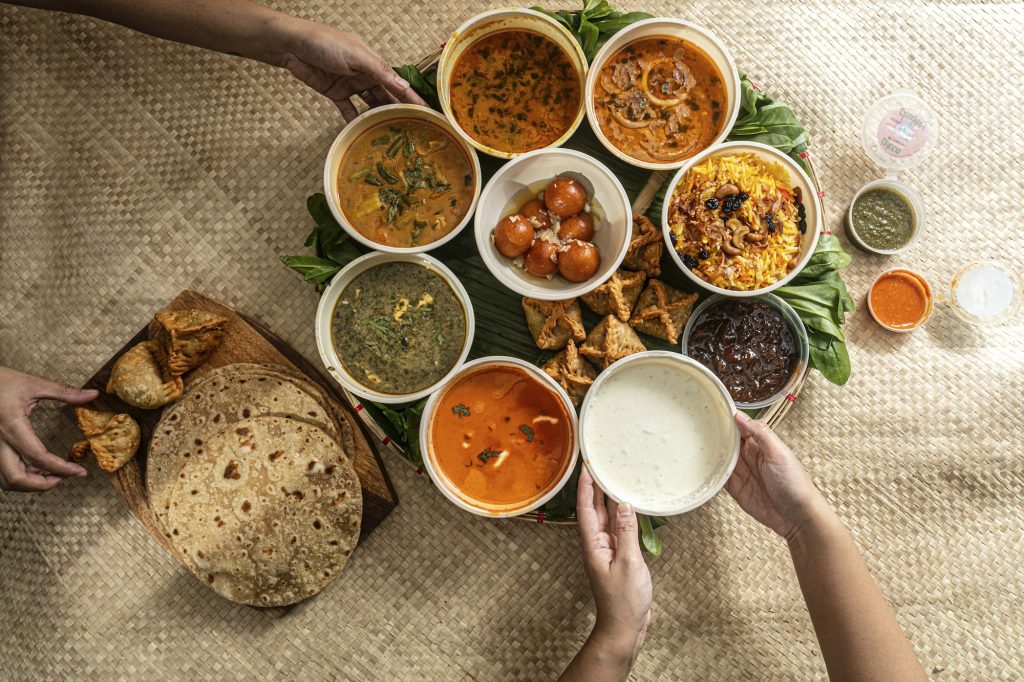
“There is still a lot to improve on when it comes to our packaging. For one, I’m not comfortable with the amount of plastic we use,” Araneta points out.
Providing the full package experience goes beyond just creating beautiful design, it needs to be functional, too.
A fan of Kashmir, Sanj Licaros of The Daily Butlery adds, “What was most well-thought-of in the design of the whole to-go service packaging of Kashmir is the representation of the national flag of India—the horizontal tricolor of deep saffron in the ribbon, white in the Cornware bowls, and dark green on the banana leaf.”
Bonne Cha
This online food business put up by sisters Lady and Steph Badoy offers Vietnamese noodles and bottled drinks with a cheeky and colorful branding. Started in 2019, Bonne Cha impressed with bowls of noodles wrapped in striped or polka dot fabric with a playful tagline of “Send noods.”
“We’re suckers for all things pretty. As food, events, and product stylists, it’s important for us that everything looks nice; a feast for the eyes and not just for the palate. We imagine opening the food pack ourselves and how we want it to be an experience,” says Lady.
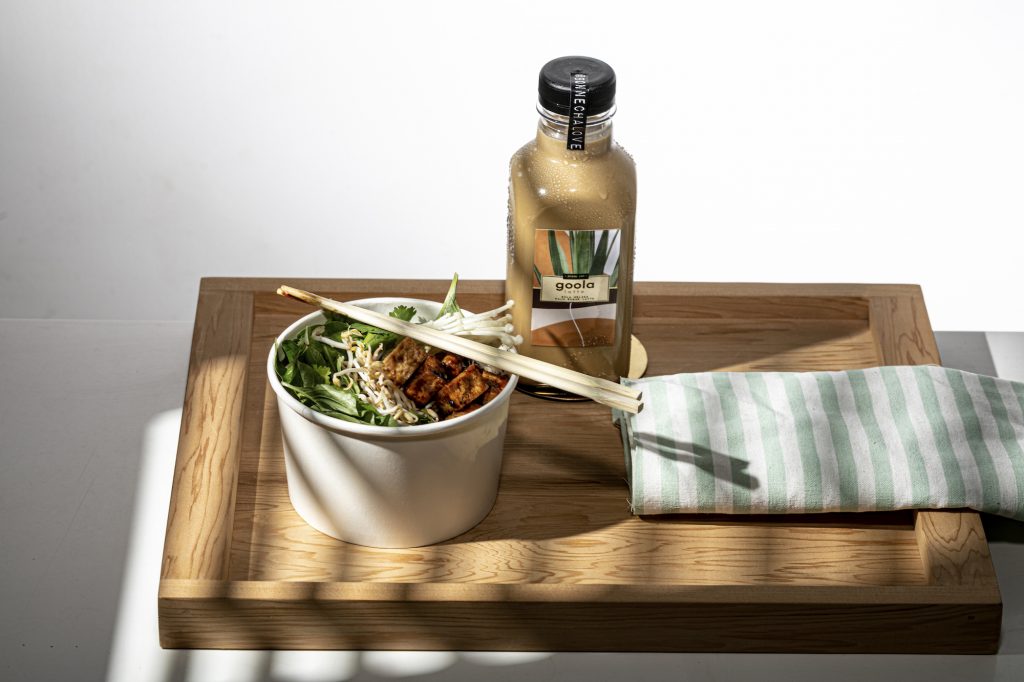
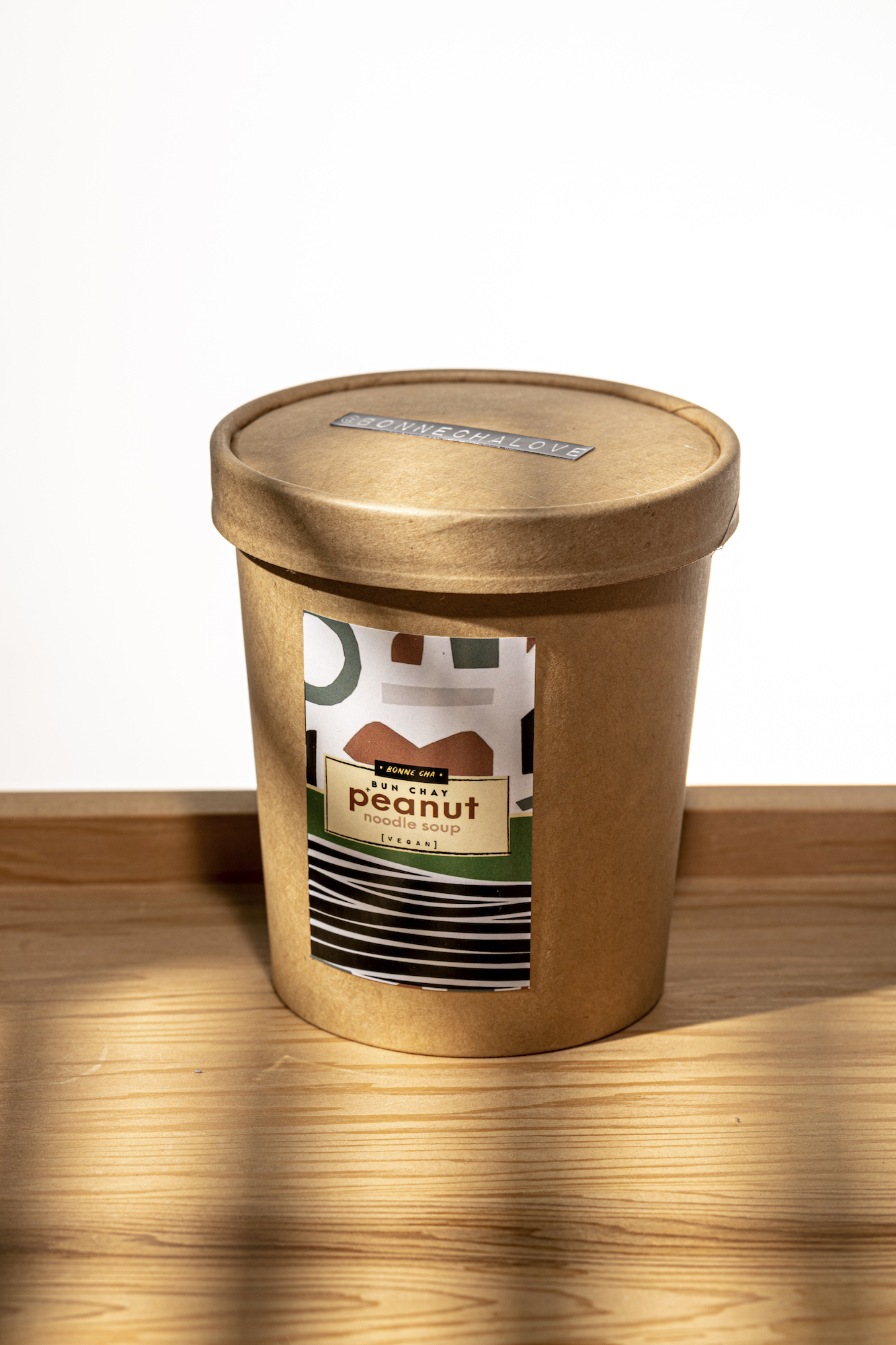
Their latest offering of vegan bun chay comes with peanut soup. The hearty soup comes packaged separately in a kraft cup while the noodles, herbs, enoki mushrooms, and marinated tofu are packaged in a paper bowl wrapped in fabric. Everything is cleverly labeled with embossing tape, which gives it a personalized touch.
“We want the experience to be fun for our customers. It is important that our branding is cohesive, that it tells a story,” Lady adds. For a food business that started online and with no brick and mortar, it is helpful to imbue your packaging with your brand’s values and make it memorable enough for people to remember.
Run Rabbit Run
It seems like bars such as Run Rabbit Run are the last priority on the government’s list to operate as a traditional bar when restrictions ease up. Sixteen months after the first lockdown, they still haven’t been able to open their speakeasy in Poblacion. To support the staff and crew who have become like family, Run Rabbit Run launched its Cocktails To Go program in May 2020.
“Delivering bottled cocktails wasn’t in our core DNA. We’re not one of these cloud or ghost kitchens. We’re a brick and mortar speakeasy where we make the drink in front of you and there’s that engagement. So in the beginning it was hard to find a way to get that vibe or feeling across. How do we make you feel like you were at Run Rabbit again?” asks co-founder Mike Hearn.
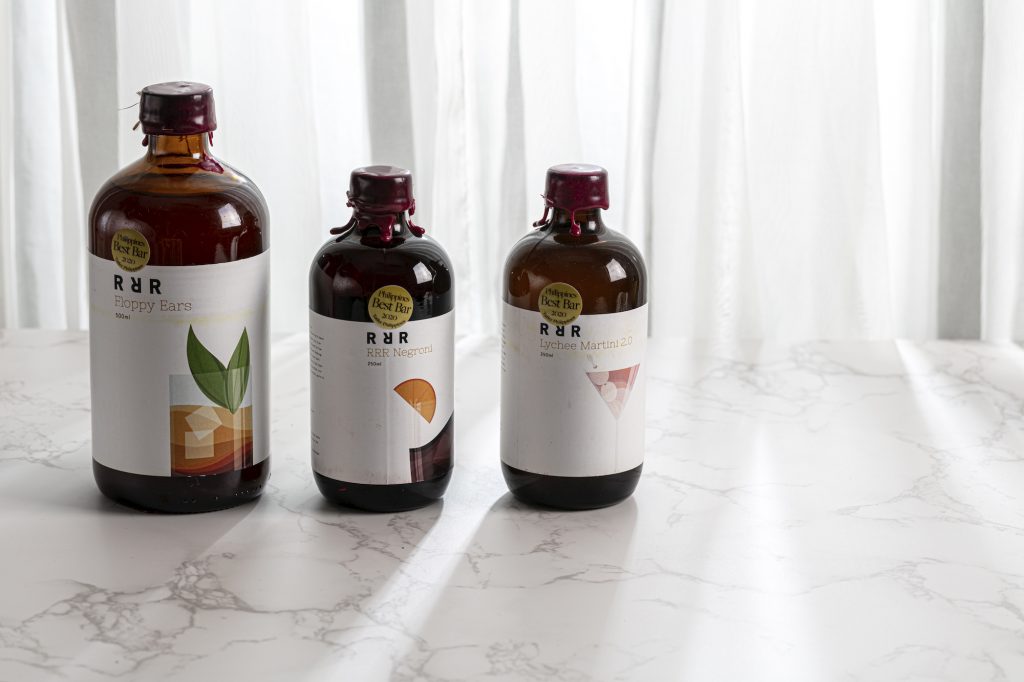
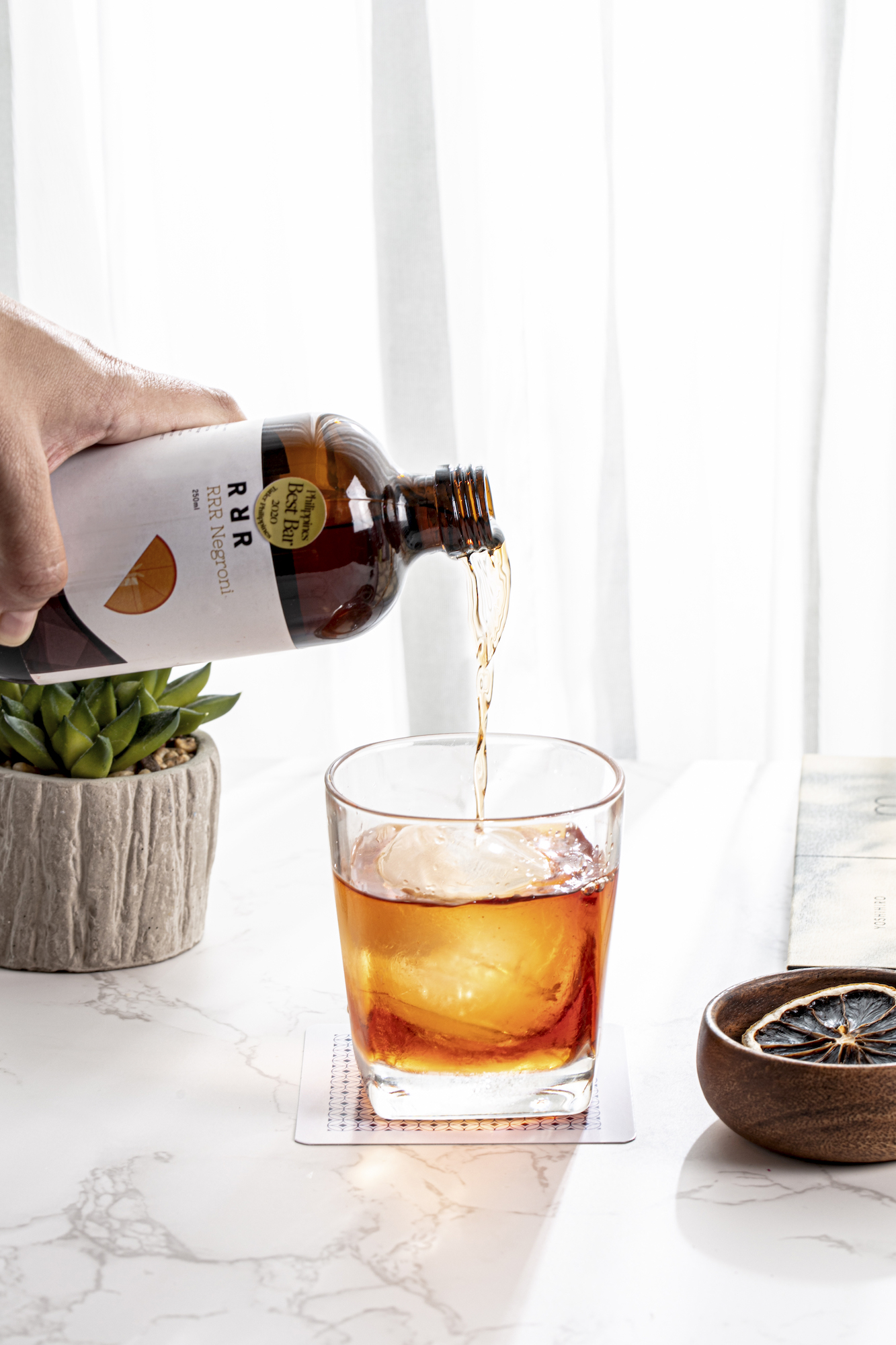

When one receives a cocktail to-go from Run Rabbit Run, it comes in a decomposable carton box. The drinks are in amber bottles, which also help lengthen the contents’ shelf life by blocking out sunlight. The labels were handsomely designed by artists TJ Estrada and Joseph Galan with Mid-century cocktail illustrations. Simple instructions on the bottles guide the consumer on how to make a refreshing cocktail. It’s a small thing, but the wax that seals the lids onto the bottles definitely helps set the mood similar to the feeling of walking into a dark, mysterious speakeasy.
The bottles contain the best of the best ingredients, according to Hearn: “One thing that trumps all lessons is consistency is key. Where a lot of brands look at the pandemic as a way of needing to cut corners or cut costs or use lesser ingredients to make a higher margin, we never did that. We never compromised that even if it was to our own detriment.”
The cocktails come with fresh and/or dehydrated garnishes to help complete the experience.
Kumakuma Curry
Launched online at the height of the pandemic, Kumakuma Curry had the advantage of being able to consider the packaging and help it be an integral part of their concept. Its Japanese curries are served in a bento box made of 100 percent biodegradable and compostable bamboo. The brand then borrows the traditional Japanese practice of wrapping goods called furoshiki using a reusable, thick, and coarse canvas.
“Liquids aren’t the easiest to package and deliver when moving from Point A to B––especially given our commitment to using sustainable alternatives for our food packaging,” says Kumakuma Curry partner Nina Capistrano.
“The starting point of our design process was this insistence on sourcing our materials more consciously, more responsibly. We then thought of ways to produce a design that was equal parts distinctive and functional. What we’ve come to appreciate most about the furoshiki is its versatility. In wrapping the furoshiki for the customer, we hope that we are able to translate the thought––the care––that comes with preparing our food,” says Kumakuma Curry partner Nina Capistrano.
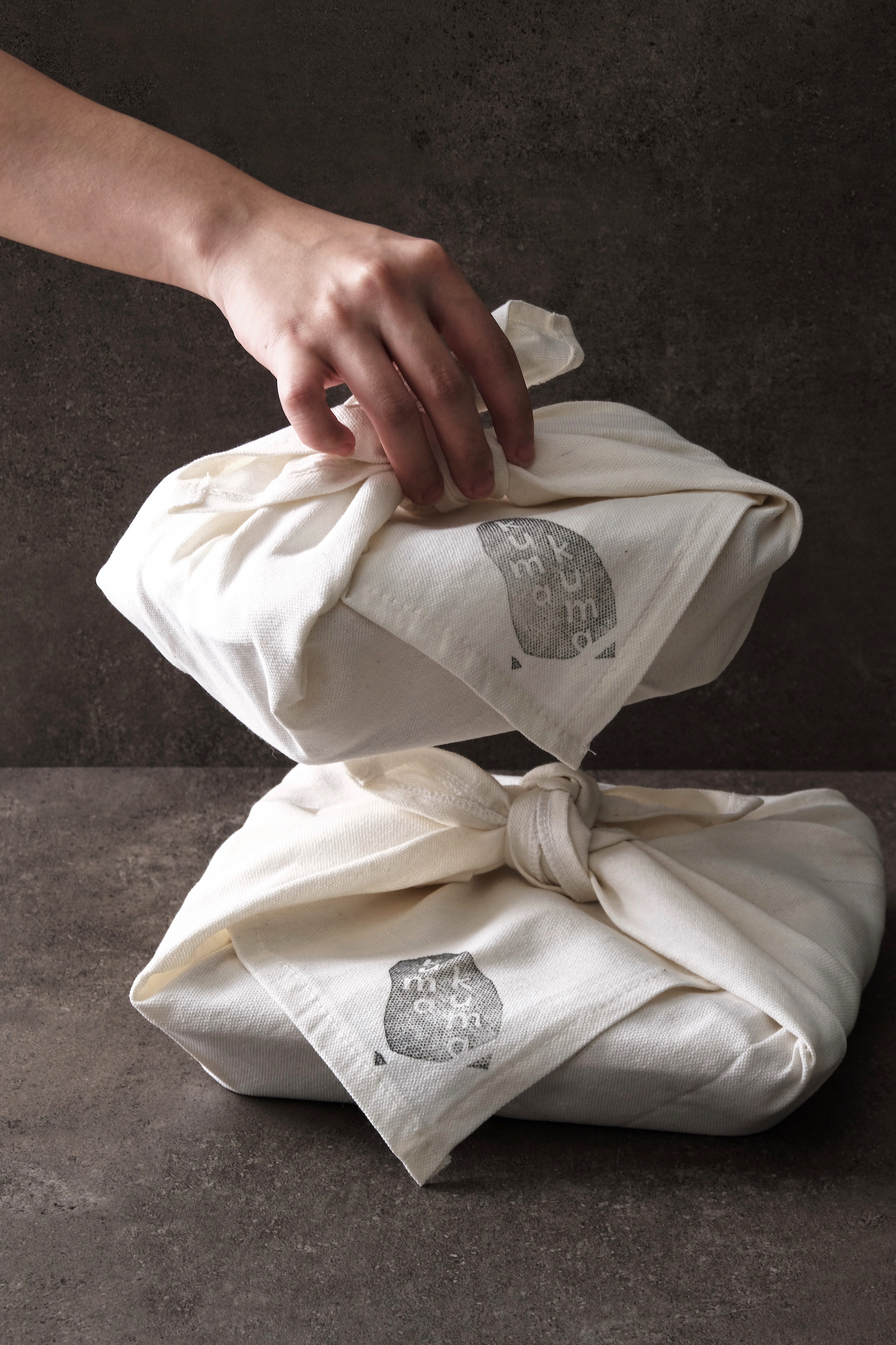
To keep the curry from spilling while in transit, chefs Takumi Reyes and Erika Pangan suggested wax paper and double-sided tape to create a makeshift seal. “Our curries, of course, come with sauces. And as you’d expect, liquids aren’t the easiest to package and deliver when moving from Point A to B––especially given our commitment to using sustainable alternatives for our food packaging. One major bonus is that the look and texture of the wax paper align with our brand direction of wanting to maintain a clean and crisp feel,” adds Capistrano.
An info card included in the package completes the experience acting as a “brief, straightforward guide” on how to best experience the food.

